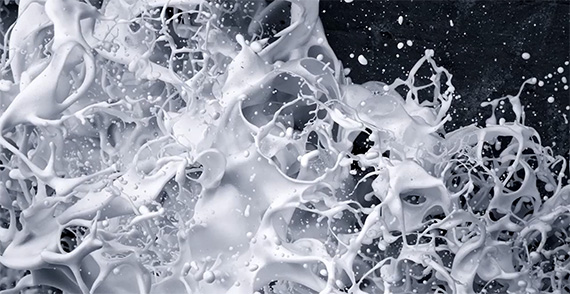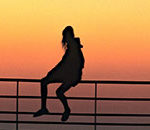On a bright, sunny day, it’s easy to freeze moving water with nothing more than a fast shutter speed. But high speed photography on overcast days takes extra attention to detail. In the video below, Varina Patel explains her techniques for capturing the ocean spray from the rocky cliffs above Fisherman Bay in Australia:
Tips for Photographing Ocean Waves

Ocean Spray Photographed with a Fast Shutter Speed
- Bump up your ISO. Don’t be afraid to increase your ISO to accommodate faster shutter speeds. Because she was shooting in cloudy conditions, Patel set her ISO to 3200.
- Keep your equipment clean. When working around splashing water or dust, make regular use of a microfibre cloth and a lens hood. Specks of dirt or water on you lens can ruin an otherwise great shot.
- Go for a fast shutter speed. If your goal is to freeze water in the air, you’ll want to choose a very fast shutter speed. Patel started with 1/6400 of a second. Experiment until you get a speed that work for you.
- Use burst mode. When you’re working with a fast moving subject, like splashing water, taking several frames in quick succession allows you to catch just the right split second.
- Check for focus and depth of field. Periodically check your shots to see that they’re sharp. If the depth of field is too shallow, increase the area of focus in your photos by using a smaller aperture (larger f-number).

High Speed Photography of Waves Crashing on Cliffs
Patel demonstrates that when lighting conditions aren’t great for wide-angle landscape photography, a change of lens and a little creativity can still lead to interesting photos—you just need to know how to adapt. This video is one of 36 workshop-style video lessons from Jay and Varina Patel’s Ultimate Landscape Photography Course.
“This video is one that we shot on a heavily overcast day, when the sky wasn’t very pretty for wide-angle photography. Our film guys— Johny Spencer and Brent Mail—followed us out onto the cliffs, where we photographed the waves crashing against the rocks. Nature photography isn’t just wide-angle lenses, rainbows and sunbeams. Sometimes, you have to pull out a lens you don’t use very often and get creative with the light and the location you have to work with.“
Like This Article?
Don't Miss The Next One!
Join over 100,000 photographers of all experience levels who receive our free photography tips and articles to stay current:






Leave a Reply